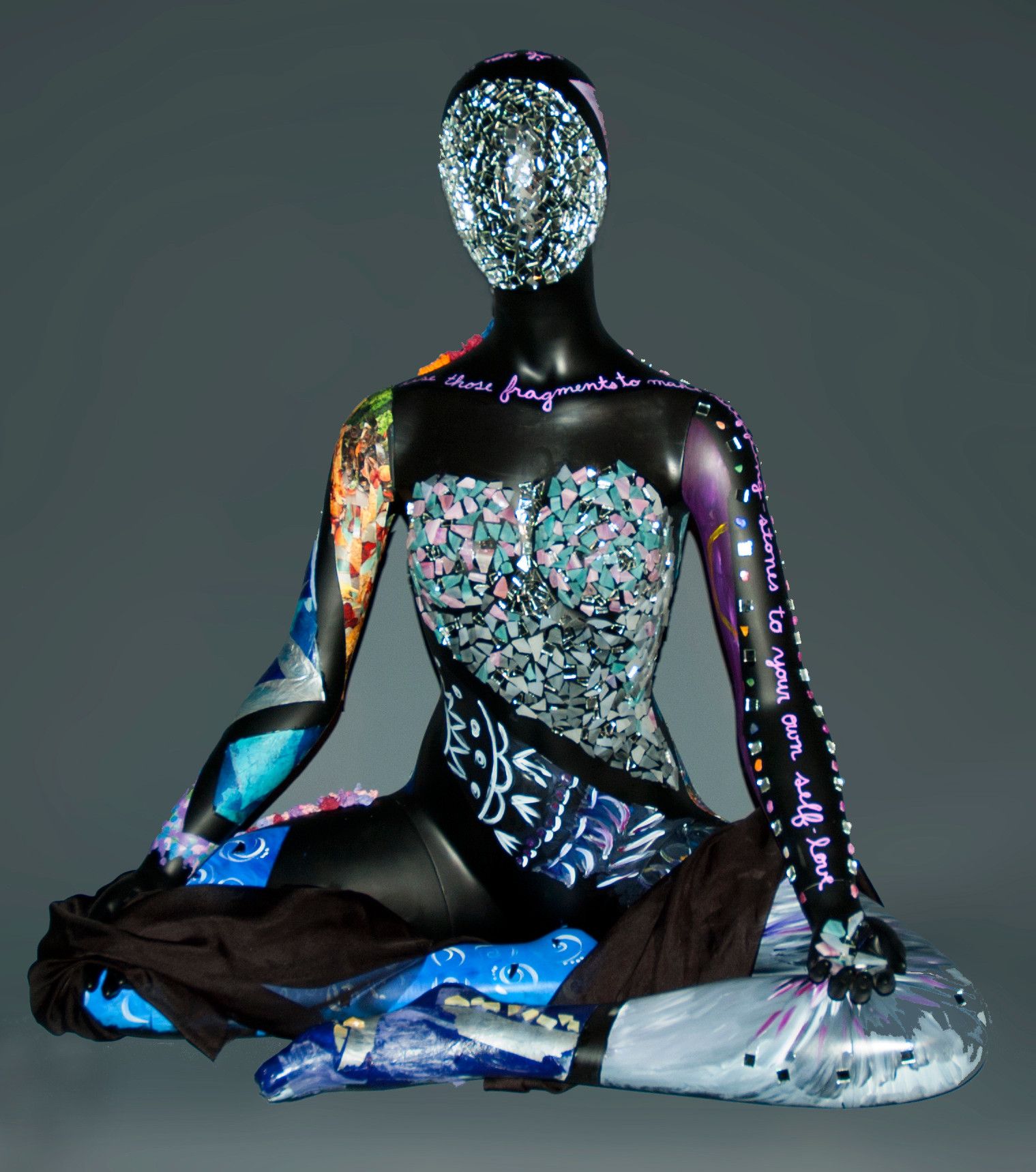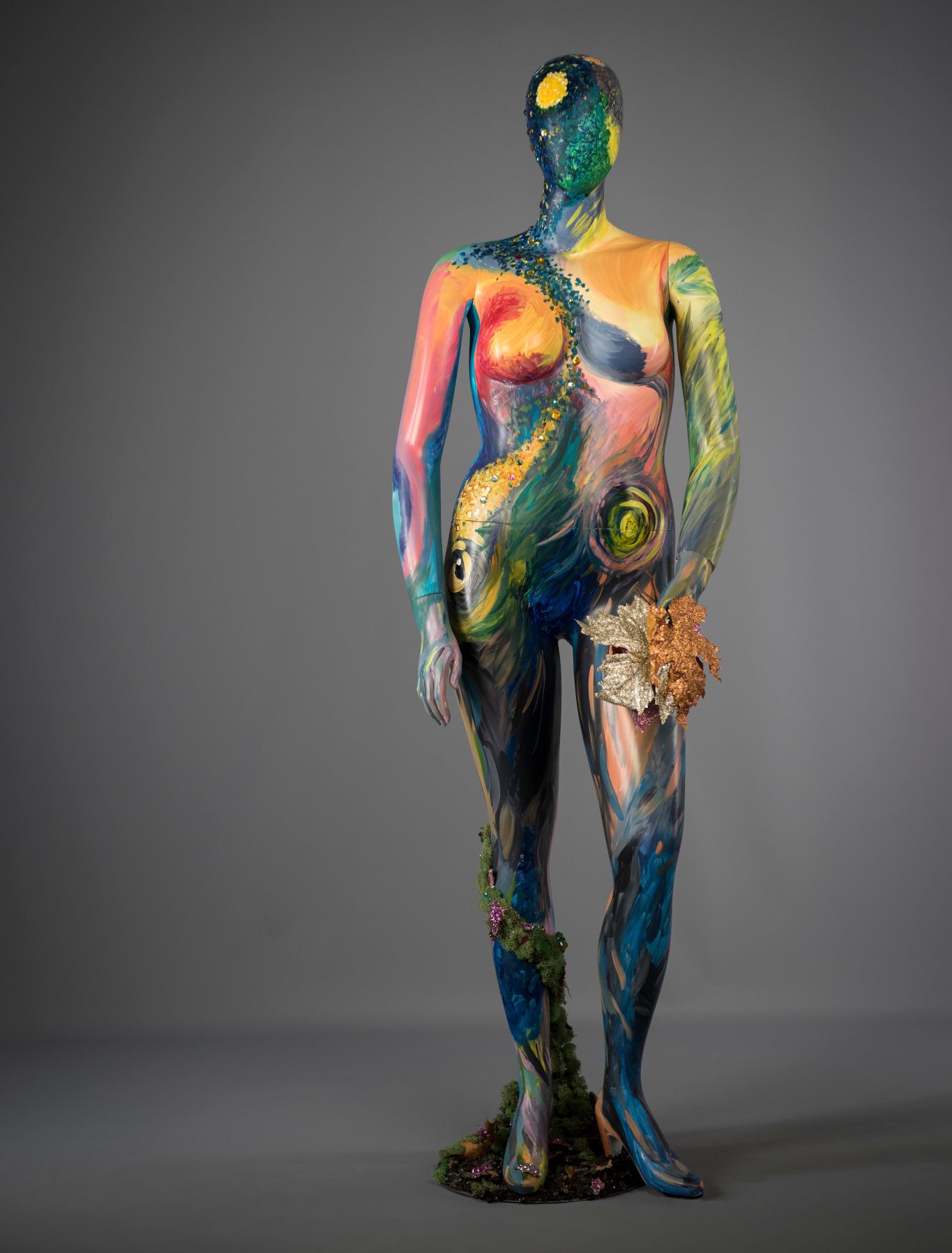Art Therapy and Eating Disorders – An article about iaedp 2018 “Imagine Me Beyond What You See” Art Runner-Up Eileen Misluk
How an IUPUI professor uses art therapy to treat eating disorders
In Eileen Misluk‘s graduate classes, students talk through challenges they are having while working and interning as art therapists.
And Misluk, an assistant professor at the Herron School of Art and Design and director of the art therapy program, noticed that her students often brought up clients who potentially have eating disorders or eating-related issues, asking how they can help them.
“I became really aware that my students were not necessarily well equipped to assess for eating-related issues. And for a lot of the early clinicians out in the field, and some seasoned ones as well, this hasn’t been an area of focus for them,” she said.
So Misluk, who is a certified eating disorder creative arts therapist, decided to come up with a training program.

She’s developing a program that will train those working at community mental health agencies to know how to identify if clients have eating-related issues, as well on best practices to work with them and when to refer them to a specialist.
And as a member of the Eating Disorder Task Force of Indiana, she’s also working with that group to see if the program could be counted toward continuing education for mental health clinicians in the state.
Funding for the training program, as well as for Misluk to hire a graduate student for the project and travel to the International Association of Eating Disorder Professionals Conference, comes from a generous grant from Healthcare Initiatives Inc., an Indianapolis-based private foundation supporting the advancement of human health and well-being, that was awarded earlier this year.
Her hope is to offer the training for free so that as many clinicians as possible have access.
Misluk started working with clients who have eating disorders about 10 years ago and came to IUPUI in 2013.
She started her career in forensic psychiatry, planning to work with people who were coming out of prisons and correctional facilities. However, after attending a talk about eating disorders by a psychologist in 2008, Misluk changed course and focused her work on eating disorders and eating-related issues.
“It was really eye-opening,” she said, adding that she started to think more about the impact of media messages and the relationships that people have with food.
“With addictions, we can look at an abstinence-based model. But we can’t do that with food,” Misluk said, noting that everyone has to have a relationship with food.
 View print quality image
View print quality imageSo art therapy is a way for people to process their emotions and how they are currently feeling about food, whether that is positive or negative, she said. Creating art allows clients to have an ability to tell and document their own stories.
Eating disorders distort a person’s body image, so in many cases, making art is more effective for clients than talking about their bodies, Misluk said. And there’s also a lot of stigma around eating disorders, so it’s important to address people’s beliefs and preconceived notions, she added.
“When we don’t see visual representations of ourselves in society, we begin to see that we don’t fit in, and I think that that’s creating a lot more challenges and damage to our young kids,” she said.
Often, she said, clients realize they’ve been carrying around beliefs based on early messages they got and have core beliefs that they never asked to have.
“So we have the ability, through the art making, to provide an external place to put some of this stuff,” she said.





